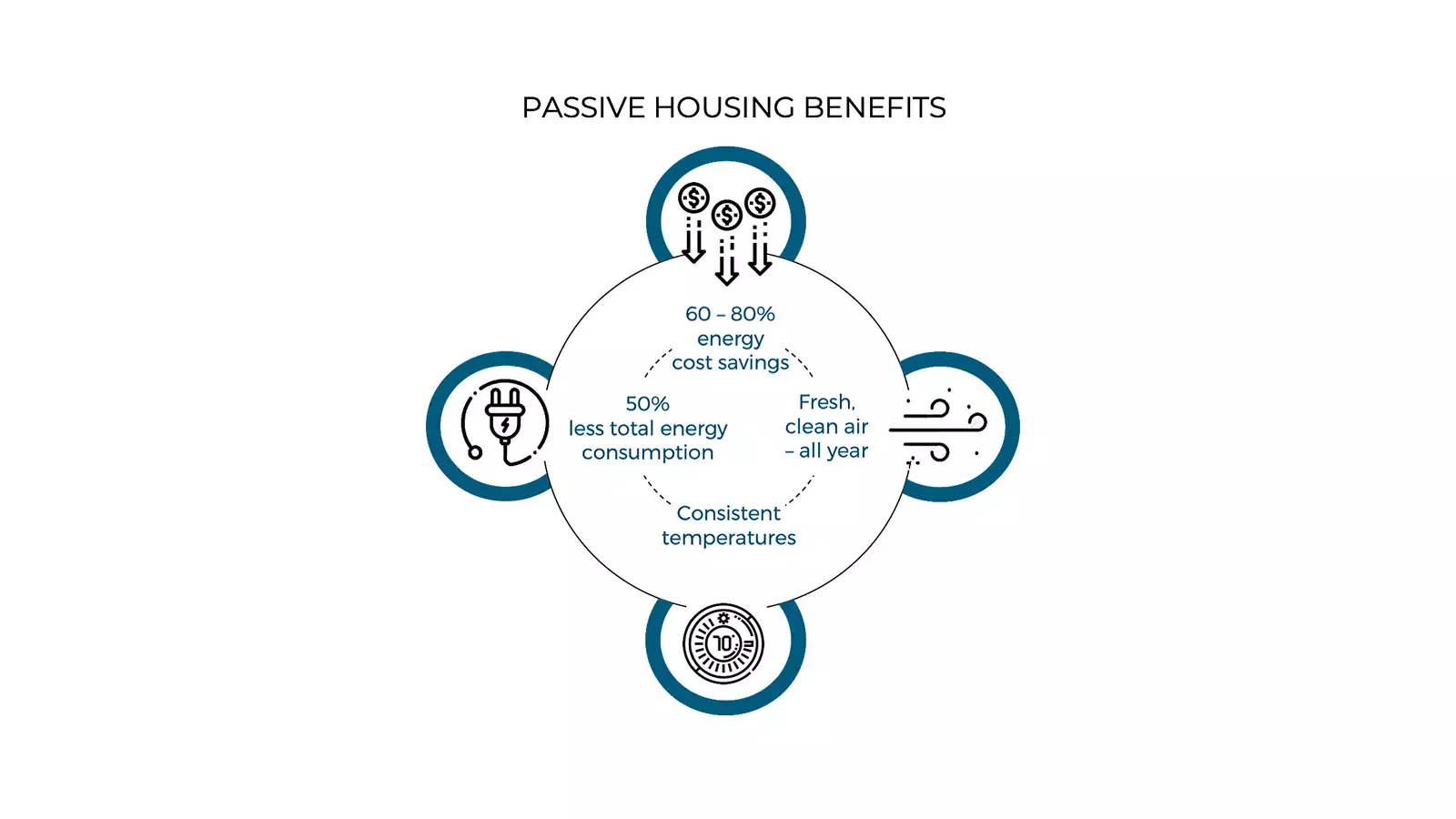The total cost of homeownership includes much more than qualifying for monthly mortgage payments, property taxes and homeowner’s insurance. Other costs to budget for include utilities such as electricity, water and gas, which can add an additional hundreds of dollars on top of other monthly housing expenses. However, new building codes and technologies such as Passive Housing are being introduced to decrease these costs for homeowners and provide more ecologically-friendly homes.
Passive House (Passivhaus) is an internationally-renowned building standard in the design and construction of energy efficient home. The concept was first developed in Germany in the 1980’s and has since grown to become a building standard on a global scale. To meet the Passive Housing standards requires maximized energy efficiency to provide optimal indoor thermal and living conditions, all while producing significant cost-savings.
ENERGY COST SAVINGS & ENVIRONMENTAL BENEFITS
One of the main benefits of Passive Housing is the energy cost savings. These homes must adhere to strict building criteria, consuming up to 90% less heating and cooling energy when compared to conventional buildings. This results in energy cost savings of approximately 60 to 80% overall. Through its meticulous design and moving away from glass enclosed structures, passive homes utilize the surrounding environment to reduce GHG emissions associated with the typical home functions such as heating, cooling and lighting.
SUPERIOR ACOUSTIC INSULATION AND TEMPERTATURE CONTROL
Typically, passive design requires walls which are six inches thicker than standard building codes, along with triple glazed windows. This not only serves as a thermal insulation, which provides more heat retention and consistent temperature control, but also acts as an additional acoustical buffer. In fact, Passive House buildings are designed to maintain temperatures at 20 degrees Celsius during the winter time and 25 degrees Celsius in summer. This allows for quieter living standards while maintaining comfortable living temperatures, all with reduced heating and cooling costs.
HIGHER AIR QUALITY
Advantages of Passive Housing also includes a higher quality of air due to the insulation standards and tightly sealed building envelope. The heat recovery ventilation (HRV) systems continually push stale air out to supply fresh air, providing pollen-free and dust-free air, an added bonus for those with allergies.
Passive Housing standards can potentially reduce a home owner’s heating expenses by up to 90%. MLA Canada’s project, Skagen by Eighth Avenue Development Group will be constructed under Passive House standards, meaning all townhomes offer long-term cost savings, exceptional indoor air quality and durability.
Ideally, Passive House Standards can continue to be adopted locally as it represents one of the best opportunities to be sensitive to the environment without significant additional construction costs or costs to the homebuyer.
